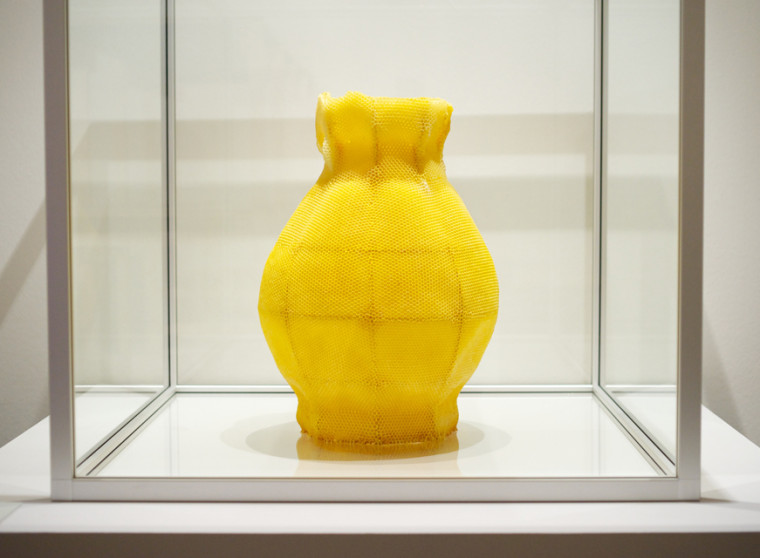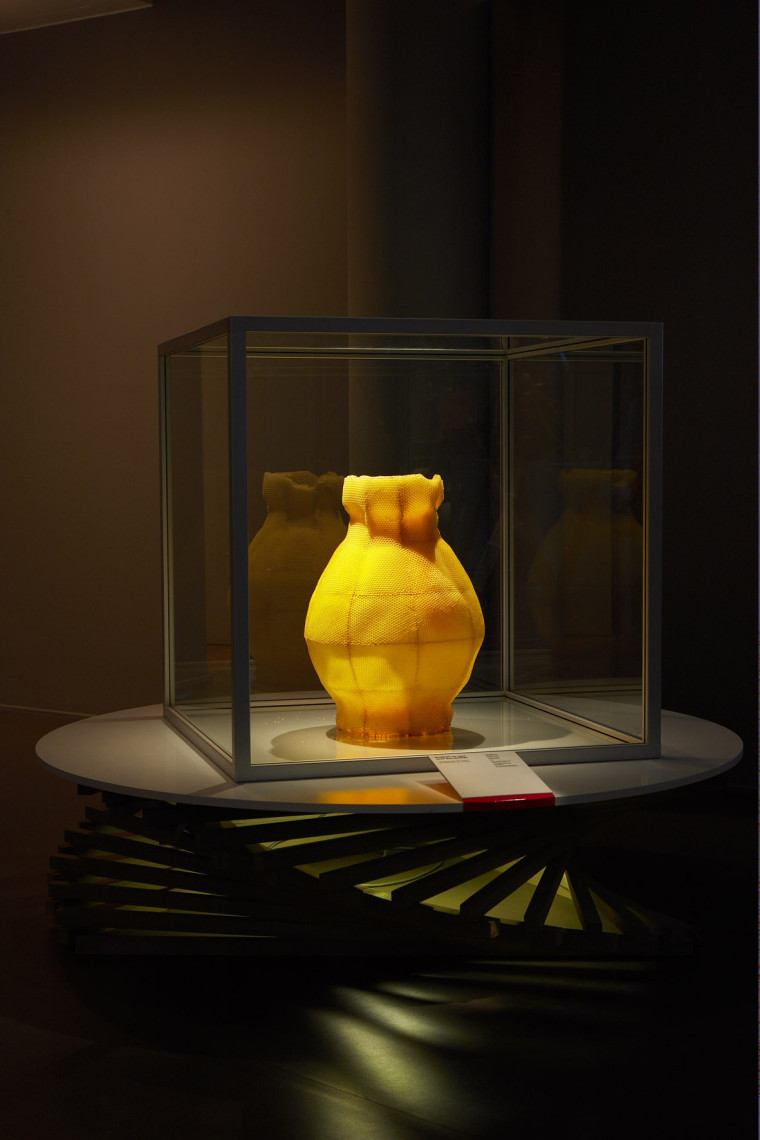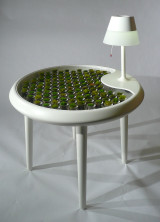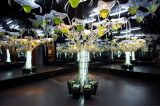To sculpt a vase with honey bees
Vessel #1

Tomáš Libertíny
The work explores the possibilities of manipulation of nature, juxtaposes control with freedom, questions destiny and will.
It took 60,000 bees and two months to make Vessel #1. We called the process ‘slow prototyping’. Libertiny’s ‘collaboration’ with honey bees pushes the boundaries of conventional design by defying mass production and enabling nature to create what would typically be considered a man-made product.
The process starts by inserting a carefully engineered skeleton into a specially prepared hive. The slow building of the hive is monitored, and from time to time an intervention is made to help guide the construction of the honeycomb structure. The process could be compared to growing bonsai (Japanese miniature trees grown in containers).
It took 60,000 bees and two months to make Vessel #1.
Vessel #1 not only tells the story of human/bee collaboration, but does so in an ecologicallyderived, natural way that concedes the human manufacturing process to something simpler and more beautiful. The material comes from flowers, as a by-product of bees, and in the form of a vase ends up serving flowers on their last journey. The fragile and seemingly ephemeral result stands in a stark contrast with its durability and resistance. In fact, Vessel #1 has the potential to last over 2,000 years. Honeycombs containing edible honey were found in Egyptian pharaohs’ tombs.



